| |
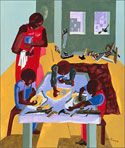 The Home
A domestic space. The location of the familiar, the warm, the comfortable.
|
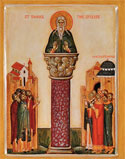 The Tower
A place to withdraw in solitude and turn inward, for clarity of thought and closeness to the heavens. |
 The Colosseum
Space for performance, games, and play. |
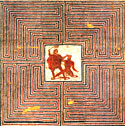 The Labyrinthine Cavern
Space for explorations in the dark, with light, a chance to explore, make choices, get lost, or find a monster! |
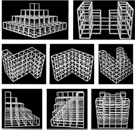 The Scaffold
A space where the underlying structure of the space is made visible. |
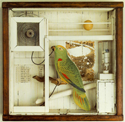
The Drawer
A small space, a container. A place to retrieve, or put away, small intimate things. |
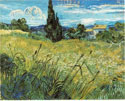 The Field
Unbounded space, where the natural world is encountered. |
Kindergarten |
Concept: Every artist has a family.
Cultural/Historical Reference: Carmen Lomas Garza’s family paintings, Picasso’s Mother and Son, Degas’s Bellelli Family. Students discuss the differences in the families and how they are represented.
Art Activity: Students paint an image of their family using their own visual style.
|
Concept: A symbol is an image that represents something or someone.
Cultural/Historical Reference: Adinkra symbols from Ghana.
Art Activity: Students paint with acrylic on fabric to make an Adinkra cloth using Adinkra symbols that represent traits they feel describe themselves, or invented symbols for new traits or feelings.
|
Concept: A costume transforms who you are.
Cultural/Historical Reference: Suprematist costume design by Lyuibov Popova.
Art Activity: Using bold colors and shapes, students paint and affix cloth to disposable (cheap) paint coveralls. The resulting costumes can become part of materials in the dramatic play area of their kindergarten classroom.
|
Concept: A dark ground can make your colors glow.
Cultural/Historical Reference: Russian painted lacquer boxes; A reading of the folktale “The Stone Flower” about a boy trapped in a dark cave with a bright, jeweled flower, accompanied by lacquer box illustrations.
Art Activity: Tempera painting on black paper
|
Concept: Weaving creates pattern and structure.
Cultural/Historical Reference: African Tutsi Basket.
Art Activity: Students use strips of construction paper of varying widths and colors to weave a simple basket featuring a unique pattern.
|
Concept: You can share your art with others.
Cultural/Historical Reference: Mail art (Ray Johnson).
Art Activity: Students paint an image on a postcard intended for a specific person. They conceive and write a short message to that person about the work, and mail the postcard.
|
Concept: Neighboring colors can change how we see a color.
Cultural/Historical Reference: Color field paintings of Rothko and Hoffman.
Art Activity: Students make a tempera/acrylic painting with distinct areas of color that touch.
|
Grade 1 |
Concept: Colors can create a warm space.
Cultural/Historical Reference: Marc Chagall’s use of warm and cool colors to show intimate spaces and emotions.
Art Activity: Students paint an image using warm and cool colors to convey physical or emotional temperature.
|
Concept: Color and shape can express emotion.
Cultural/Historical Reference: Edwark Clark’s abstract expressionist paintings.
Art Activity: Students read a short narrative prompt describing an emotional situation (“Someone made my best friend cry,” “My grandma is visiting today.”). Students then make large-scale expressionist paintings on butcher paper depicting the emotional response they feel they would have in the situation.
|
Concept: You can tell a story with shadows.
Cultural/Historical Reference: Chinese (and SE Asian) shadow puppetry.
Art Activity: Students cut card and use brads to make jointed shadow puppets, then demonstrate/perform with them for their classmates behind a piece of backlit vellum.
|
Concept: You can create a new image out of pieces of old images.
Cultural/Historical Reference: Read the story of Theseus and the Minotaur. Elicit and list other mythological combinatory creatures.
Art Activity: Collage image of a created beast using images and textures from the natural world.
|
Concept: An under-drawing can help you plan your painting.
Cultural/Historical Reference: Still life. Picasso, Cézanne.
Art Activity: Students make a still life image, first planning the placement of their objects using pencil, then painting in tempera.
|
Concept: Art can be a container for important things.
Cultural/Historical Reference: Egyptian canopic jars. Discuss how the vessels are hollow and have an open top so that they can contain important things, and also because of the way clay is fired, it must be solid, but have no sealed ‘bubbles.’
Art Activity: Using basic pinch-pot manipulation, students make a small jar, and a hollow hemisphere lid which they can decorate with features like a canopic jar lid.
|
Concept: Art can record an action.
Cultural/Historical Reference: Richard Long’s walks, and the installations
Art Activity: Students take a short walk outside, around or near the school grounds, collecting memorable natural artifacts (this would be best around fall, when dry leaves, twigs, and pinecones abound). In small groups, students put up installations in the hall, arranging items on the floor, and “painting” shapes with mud from collected soil on butcher paper hung behind their floorspace. The groups discuss which items they chose from their walk, and how their art –and their walk – is different from any of Long’s.
|
Grade 2 |
Concept: Art can be a house for memories.
Cultural/Historical Reference: Jennifer Walsh’s sound reliquaries; traditional reliquaries.
Art Activity: Students bring a photo (or reproduction) from home and create a frame/container for it using collage elements (cardboard, colored paper, foil). Students who don’t have a photo to bring, can write a favorite memory on a piece of card, and build their work around that memory.
|
Concept: What you wear can express a part of your inner self.
Cultural/Historical Reference: Yoruba beaded crowns.
Art Activity: Students make papier-mache crowns topped with sculptural renditions of animals that they feel represent them. Beads are threaded while they dry, and on a subsequent class the crowns are painted and decorated with beads, and the threaded beads are hung down around the rim of the crown.
|
Concept: Artists can take turns shaping the same artwork.
Cultural/Historical Reference: The collaborative sculpture of Taylor Davis and Nicole Cherubini. Explain how one artist completes a partial piece, then mails it to the collaborator who appends onto it.
Art Activity: Students, in pairs, work on collaborative ceramic sculptures. The students first make a form, and exchange them with the partner. Using scoring and slipping, the second student adds to the form. Finally, the pieces are returned to the original artist and glazed.
|
Concept: Transparency and opacity can affect how we see color.
Cultural/Historical Reference: Chinese jade, Southwest American turquoise, and Cretan agate carving compared to Western European medieval jewelry using transparent gemstones. Students will handle and examine several semiprecious gems and minerals.
Art Activity: Diptych, one side a painting using transparent watercolor and based on a favored transparent gemstone, the other side using opaque tempera and based on a favored mineral.
|
Concept: Layers build strength.
Cultural/Historical Reference: Papier mache carnival masks from Italy and New Orleans.
Art Activity: Students make a papier mache mask starting from a simple armature made of rolled bands of newspaper taped together. The layers of papier mache lend strength to a structure that is entirely made of paper! The mask is then painted and decorated.
|
Concept: Smalls things can become powerful in large numbers.
Cultural/Historical Reference: Ai WeiWei’s sunflower seeds.
Art Activity: Students make a small stamp by cutting a shape from foam, then use that stamp to repeat a shape, varying color and orientation, in their own composition on a larger paper.
|
Concept: A landscape has a foreground, a middleground, and a background.
Cultural/Historical Reference: Julie Hart Beers, Hudson River Landscape with cows.
Art Activity: Students paint their background in watercolor on one sheet of paper, and their middle and foreground elements on separate sheets, which they then cut out. The layers are overlaid to build a complete landscape.
|
Grade 3 |
Concept: The tighter the weave, the warmer the blanket.
Cultural/Historical Reference: Navajo blankets.
Art Activity: Students weave a small blanket using yarn on a cardboard loom.
|
Concept: You can find symmetry in nature.
Cultural/Historical Reference: Ernst Haeckel’s “Artforms of Nature,” the skull and flower paintings of Georgia O’Keeffe.
Art Activity: Students draw half of an image in pastel on folded paper, then close the paper and do a rub/transfer to make a symmetrical image of a plant, animal, or other natural form. Students then paint over their linework with watercolors.
|
Concept: Repetition can be reflection.
Cultural/Historical Reference: Tibetan mandalas. The class discusses how the patterns are literally reflected (review symmetry), and how when the artists make these repetitive shapes, it helps their mind “reflect” on important ideas.
Art Activity: Students create a design incorporating items and values they feel are important on a 6”x6” sheet of paper. Using tracing paper and carbon paper, the students invert and transfer that image four times onto a 12”x12” paper, creating a radially symmetric mandala pattern, which they then color with colored pencils.
|
Concept: Different people see art in different ways.
Cultural/Historical Reference: Rebecca Campbell and Nicole Walker’s “7 Rings” art project, in which artists and poets alternate 7 turns responding to each others’ work in a “game of telephone.”
Art Activity: Students each receive a long strip of paper, divided into squares. The students draw a timed image, and then all pass it to the next student. Each student then writes a short description of that image, and folds the image back. The paper is passed again, and students draw an interpretation of that description, etc. Afterward, the class discusses how the images changed through interpretation.
|
Concept: Lines can divide space and affect how our eyes and body pass over it.
Cultural/Historical Reference: Chartres labyrinth. We follow the lines with our eyes, and imagine following the path with our feet.
Art Activity: In pairs, students design, paint, and decorate a small, walkable labyrinth on a 3’x4’ piece of paper, with an entrance and exit. The pieces are installed together on the floor in an open area of the school, the students working together to adjoin the starts and ends of their mazes to make a giant labyrinth, which they then traverse on foot.
|
Concept: An armature supports the structure.
Cultural/Historical Reference: Giacometti sculpture. Emphasize how the slenderness of the clay sculptures (before casting) necessitated extra structure.
Art Activity: Students create a wire armature, and sculpt a form additively around it. This can be done with polymer clay, plaster, or air-dry clay.
|
Concept: Arrangement can give a collection of objects meaning.
Cultural/Historical Reference: Joseph Cornell boxes
Art Activity: Using collage materials, paint, and small items from home (or the Dollar Store), students compose their own boxes, explaining the reasoning behind their arrangement.
|
Grade 4 |
Concept: You can make art about things you see every day.
Cultural/Historical Reference: Claes Oldenburg’s soft sculptures of appliances.
Art Activity: Students draw a silhouette of a household item on felt, and cut out two copies, which they sew together and stuff with batting. Sewing and fabric glue are used to add details.
|
Concept: You can be the subject of your own art book..
Cultural/Historical Reference: Autobiographical comics and collage books of Lynda Barry.
Art Activity: Students use elementary bookbinding to make a simple book, which they illustrate with an autobiographical story in pen and ink and (optional) collage elements.
|
Concept: Sometimes the artist thinks of the artwork, but someone else makes the object.
Cultural/Historical Reference: Fluxus boxes.
Art Activity: Students make “Fluxkits,” decorated boxes containing the materials and instructions to do a performance or make an object. Students then exchange Fluxkits (or they are randomly distributed) and follow the instructions to make or perform a work of art.
|
Concept: Darkness and light define form.
Cultural/Historical Reference: James Casebere’s photos of carefully lit miniature spaces.
Art Activity: Students create a small model of an interior space with windows and objects, using cardboard and air-dry clay, all painted white. Students then photograph the interior of the space multiple times, using clip lights to light the sculpture from different directions and with different colored gels and numbers of lights.
|
Concept: Arrangement can transform a collection of objects into a new image.
Cultural/Historical Reference: Willie Cole’s shoe sculptures, Arcimboldi’s paintings.
Art Activity: Students use collage to make an image of a person or object, assembled from recognizable images of other objects.
|
Concept: Small pictures make people look closely.
Cultural/Historical Reference: Persian miniatures. Close examination of details and patterns.
Art Activity: Students use a small brush to make a small painting on a small card, including at least one patterned area. Students can use magnifying glasses to examine their work in minute detail as they work.
|
Concept: A panorama is a very, very long image.
Cultural/Historical Reference: Chinese landscape handscrolls - "Along the River During the Qingming Festival" by Zhang Zeduan.
Art Activity: Students paint watercolor lanscapes on very long rolls of paper. |
Grade 5 |
Concept: You can make a portrait without a figure.
Cultural/Historical Reference: Van Gogh’s room in Arles.
Art Activity: Students paint an image of their (idealized) bedroom that expresses something about their personality. (Opportunity to review perspective, if desired.)
|
Concept: A self portrait can show how you feel on the inside, not just how you look on the outside.
Cultural/Historical Reference: Robert Arneson sculpture.
Art Activity: Students make an expressive ceramic bust that incorporates elements and formal decisions that express their inner feelings/thoughts.
|
Concept: A work of art needs rules to become a game.
Cultural/Historical Reference: Ancient Uzbekistani and Medieval European chesspieces. Contemporary board game designer and artist Brenda Brathwaite. The artistry and meaning of the pieces and boards themselves is discussed, as are the rules that dictate the piece movement and make the game function. The rules of other common board games are discussed.
Art Activity: Students design and create a board game using card for the gameboard, pen and marker, and air-dry clay for the gamepieces and any sculptural elements.
|
Concept: The audience explores your artwork.
Cultural/Historical Reference: “Hypercomics” by Scott McCloud and Daniel Merlin Goodbrey.
Art Activity: In pen and ink on large paper, students will create a comic strip story that branches at points where the reader can make a choice, resulting in multiple parallel narratives, and a comic that takes on a labyrinthine form.
|
Concept: Perspective helps you build a 3-D space in a 2-D drawing.
Cultural/Historical Reference: Raphael’s School of Athens.
Art Activity: Students create a line drawing using basic one-point perspective and perspective rules of size and position in relation to the vanishing point.
|
Concept: Sometimes the most beautiful part of the work is hiding inside of it.
Cultural/Historical Reference: Millefiore beads.
Art Activity: Students observe how cutting a seemingly uniform cylinder of polymer clay reveals the ornate millefiore pattern. Students make their own 3” cylinder millfiore pattern by rolling and layering small pieces of colored polymer clay, then cut their beads apart using a dull tool. After they are baked, the students can exchange and string their beads.
|
Concept: Line can show movement in nature.
Cultural/Historical Reference: Chauvet cave paintings.
Art Activity: Students make charcoal drawings of a figure or animal in motion, using gesture or repetition of line to convey movement. Students may use documentary footage as reference.
|




